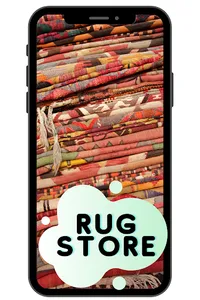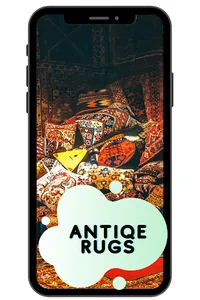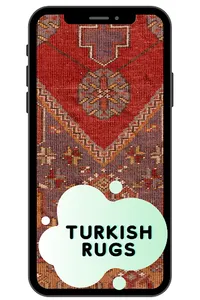With this app, you can find Persian Rugs, Turkish Rugs, and Moroccan rugs.
Nomads Loom has one of the Largest selections of antique rugs and kilims you'll find anywhere in the DFW area.
The history of Persian rugs dates to 2500 years ago. Persians brought out the best instances of creativity and skills. The art of rug knotting, transferred from father to son and became a family tradition in Iran.
The fame of the Persian rugs, traveled around the world became an outstanding asset. In all industrial and developed countries, being possessed of Persian rug means that the owners are wealthy and have artistic souls. The art of hand-knotted rug improved and became magnificent throughout the years and brought glorious fame and success for its creators.
Hand-knotted rugs have three different types in terms of materials: wool, silk, and wool-silk mixture. Approximate ninety percent of a Persian rug, made of wool.
İranian rugs, made of wool and silk, also has Persian and Turkish knot technique. Not to mention the fact that Persian rugs are high-quality rugs that are colored by vegetable dye.
A Persian rug is known as the Persian Rug. Most of them, and the best of them, loomed by Turkic people like Azerbaijani, Turkoman, Qashqai.
Persian rug has a different technique than the rugs loomed in Turkey. Persian knots are looser and weaker in the sense of quality and durability than Turkish knots.
Art of hand-knotted rug in İran, start with Seljuks. The oldest exponent of Persian rugs occurred at miniatures in the 14th and 15th centuries. After the 16th-century Persian rug acquired a characteristic, rugs loomed for royals or endangered with royals’ consent. As from the 19th century, when fine trade organizations were constituted, İran became the top rug exporter in the world.
The rug known as the oldest Persian rug came insight in an area named Pazyrk at skirts of Altai Mountains. The rug’s patterns contain ribbon ornaments in the middle; on one border, it carries deer symbols; on the other, there are Persian cavalier figures. Studies showed that Pazyrk rug belongs to 383-200 BC.
Nomads Loom has one of the Largest selections of antique rugs and kilims you'll find anywhere in the DFW area.
The history of Persian rugs dates to 2500 years ago. Persians brought out the best instances of creativity and skills. The art of rug knotting, transferred from father to son and became a family tradition in Iran.
The fame of the Persian rugs, traveled around the world became an outstanding asset. In all industrial and developed countries, being possessed of Persian rug means that the owners are wealthy and have artistic souls. The art of hand-knotted rug improved and became magnificent throughout the years and brought glorious fame and success for its creators.
Hand-knotted rugs have three different types in terms of materials: wool, silk, and wool-silk mixture. Approximate ninety percent of a Persian rug, made of wool.
İranian rugs, made of wool and silk, also has Persian and Turkish knot technique. Not to mention the fact that Persian rugs are high-quality rugs that are colored by vegetable dye.
A Persian rug is known as the Persian Rug. Most of them, and the best of them, loomed by Turkic people like Azerbaijani, Turkoman, Qashqai.
Persian rug has a different technique than the rugs loomed in Turkey. Persian knots are looser and weaker in the sense of quality and durability than Turkish knots.
Art of hand-knotted rug in İran, start with Seljuks. The oldest exponent of Persian rugs occurred at miniatures in the 14th and 15th centuries. After the 16th-century Persian rug acquired a characteristic, rugs loomed for royals or endangered with royals’ consent. As from the 19th century, when fine trade organizations were constituted, İran became the top rug exporter in the world.
The rug known as the oldest Persian rug came insight in an area named Pazyrk at skirts of Altai Mountains. The rug’s patterns contain ribbon ornaments in the middle; on one border, it carries deer symbols; on the other, there are Persian cavalier figures. Studies showed that Pazyrk rug belongs to 383-200 BC.
Show More




